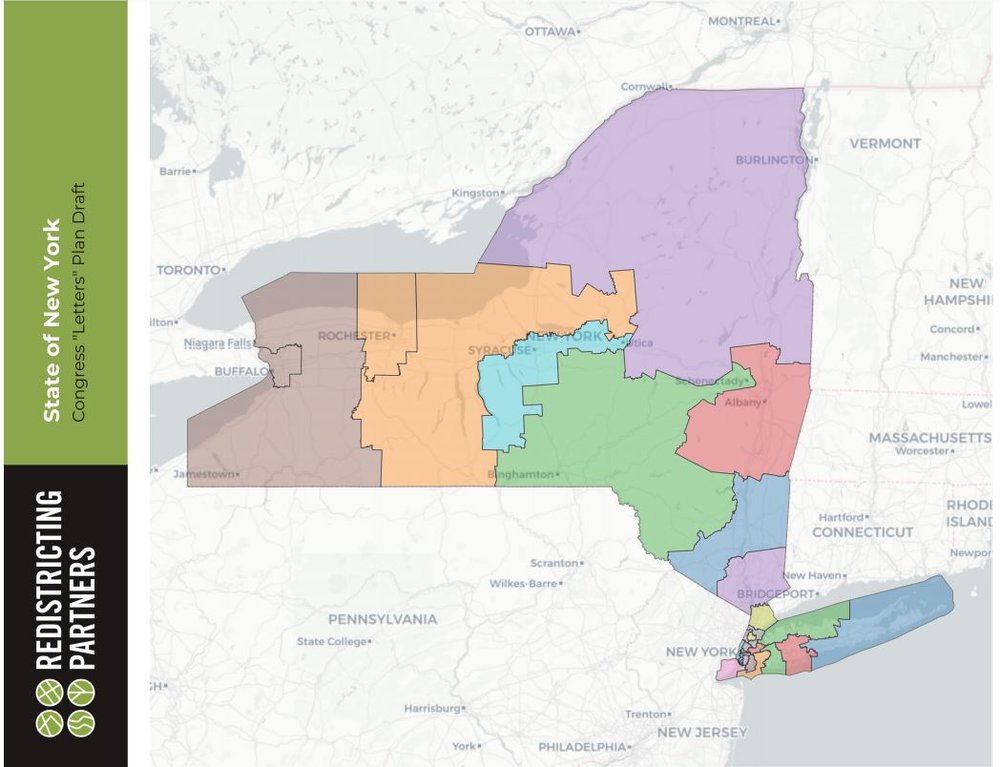After collecting public testimony for months, the New York Independent Redistricting Commission released its recommendations for new Congressional, State Senate, and Assembly maps.
Including an even number of five Democrats and five Republicans, the redistricting commission’s recommendations include two competing partisan maps, resulting in almost instantaneous criticism from both sides of the political aisle.
The redistricting process occurs every ten years after the Census, and has long been subject to the whims of partisan policymakers. However, a referendum was passed by New York State voters in 2014 that created a new Independent Redistricting Commission to replace the partisan process.
For months, the commission conducted public hearings to gather testimony throughout the state, including hearings in Queens and a combined hearing for Brooklyn and Staten Island.
However, with the release of the commission’s recommended maps, critics say it is clear that the redistricting process is just as partisan as it’s always been.
Independent nonpartisan groups have also spoken out against the commission’s finding., offered the following statement regarding the two maps released:
“Immigrant community members and other stakeholders took time off work to attend commission hearings across the state to share their concerns about the impact of unfair districts on their families and communities,” said Murad Awawdeh, executive director of New York Immigration Coalition. “The commission delivered a slap in the face to these concerned community members by failing to present New Yorkers with one draft map inclusive of public input. ”
New York State is losing one seat in the House of Representatives following the 2020 census, and as a result the most drastic changes are present in congressional distsricts.
Upstate congressional districts were greatly reimagined on both maps. On the Democratic map, large cities were often placed within the same district, including a district that would include both Syracuse and Utica and another that would include both Schenectady and Binghamton.
The Republican map did practically the opposite, isolating large upstate cities within a single district, barring an unusual noncontiguous district that includes both Binghamton and Buffalo, two deeply Democratic cities.
Congressional Districts were largely left intact within New York City, with the exception of Staten Island and parts of south Brooklyn.
Currently, parts of south Brooklyn are lumped into the same district as conservative-leaning Staten Island. The Republican map maintains this arrangement while the Democratic map isolates Staten Island as its own district.
Changes to the State Senate and Assembly maps were uniformly smaller and less notable.
Since the dueling maps were released, Republicans and Democrats have both cried foul at their opponents’ suggestions.
“They are going to stonewall and drag this process out hoping New Yorkers aren’t paying attention so partisan legislators can draw their own maps,” said state GOP chair Nick Langworthy in a statement.
In New York City, State Senators James Sanders of Queens and Roxanne Persaud of Brooklyn, both Democrats, have criticized the commission’s finding and suggested maintaining the current shape of their districts.
“I want to see if there’s any way we can keep the district as it is,” said Sanders. “We’ve kind of grown used to one another and we’d like to keep it the way it is.”
“The lines drawn by the commission must be reviewed and discussed to ensure favorable outcomes with input from stakeholders,” Persaud stated.
The commission will conduct another series of public hearings on the draft maps before submitting final drafts. If the commission does not settle on a single map, the state legislature will have final say on redistricting as was traditionally the case.
Both houses of the state legislature are controlled by Democratic supermajorities, so any redistricting maps to come out of Albany will likely be closer to the Democratic map suggested by the commission.
Photo: New York Independent Redistricting Commission



